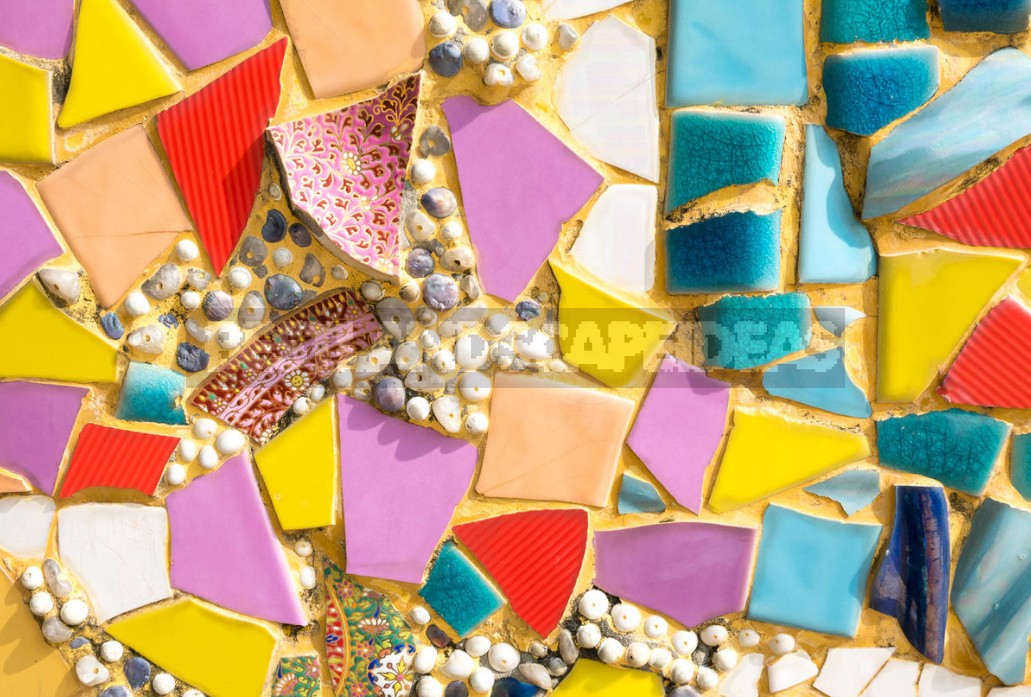
Spring has begun! In many regions, it is early this year, and summer residents are already busy with seedlings in anticipation of the new season. Therefore, the theme of decorating and all sorts of crafts goes to the second or even third plan — until the long winter evenings, which we are used to postpone things interesting, but inferior in priority to other, more important ones.
Although there are classes “long winter evenings” that require thorough preparation, and just now it is worth starting it. One of these crafts that require a lot of free time and preliminary preparations is mosaic. Of course, if you plan to decorate a table or wall with ready-made store materials, you do not need to do anything special — you just need to buy everything you need.
But I suggest you get acquainted with a very interesting technique — trenkadis. For it, you will need broken tiles left after repairs; broken dishes, eggshells, and many other different materials, as they are called, from the trash can.
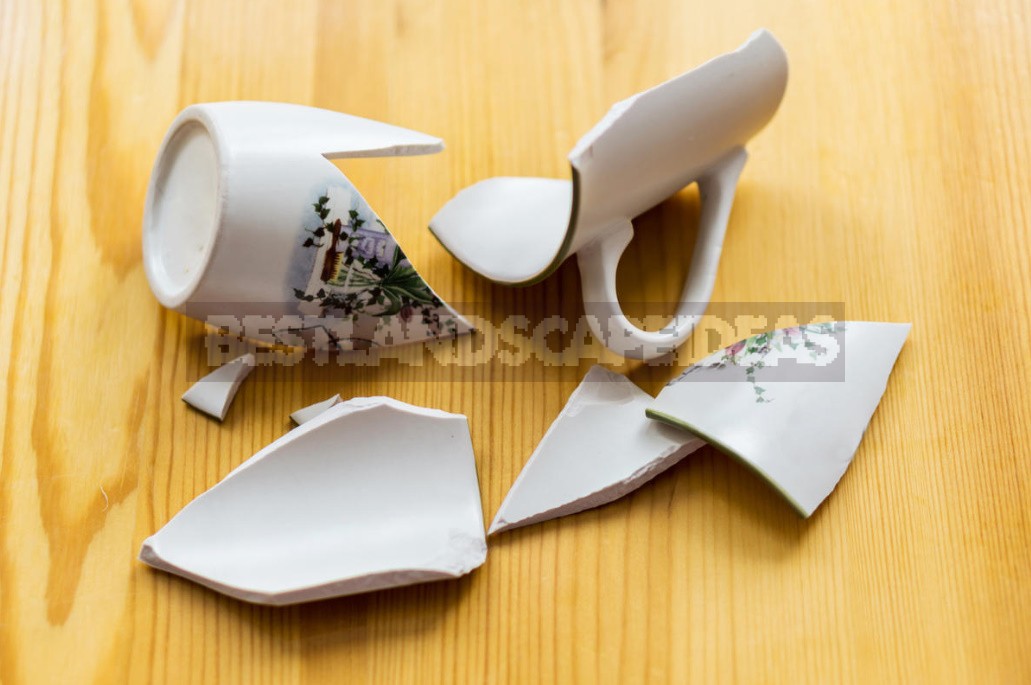
Background
A mosaic is an image made up of separate multicolored elements fixed to the surface with glue. This is an ancient art form; the oldest examples are dated by archaeologists to the IV Millennium BC. Some art historians consider mosaic the first type of artistic creativity mastered by man.
Experts distinguish several techniques, but the division is very conditional. For example, Roman mosaics were found not only in ancient Rome. The Byzantine technique is a kind of Roman technique, only made of the smallest elements. As a material for it, smalt was most often used, especially with a Golden pigment. What are the main differences and features of existing types of mosaic?
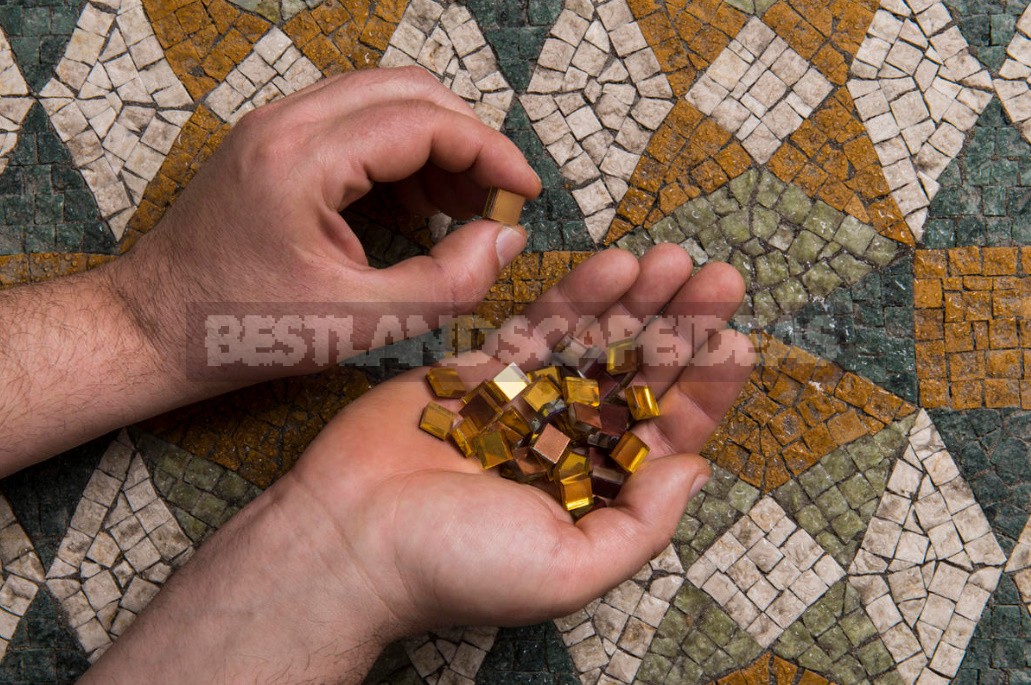
Roman mosaics
Roman mosaics are the most ancient form of this art. The drawing is made up of details that are close in shape to a square. All panel elements are approximately the same size. The smaller the squares, the more complex and detailed the image can be created.
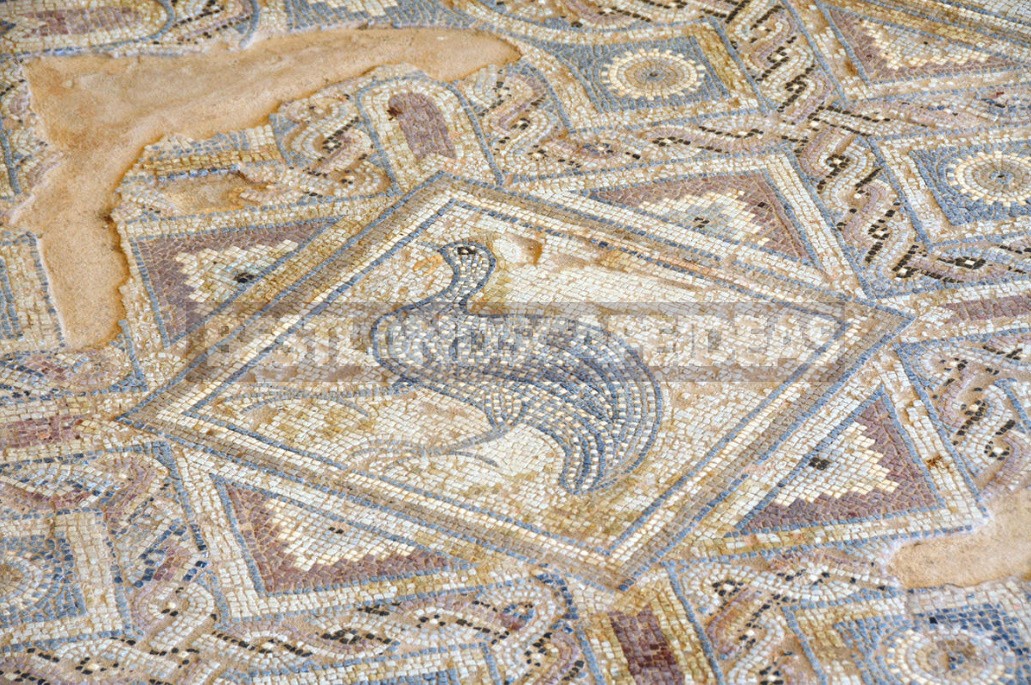
Traditional Roman mosaics were made mainly of multicolored stone. Later, glass and smalt (Byzantine mosaic) and ceramic tiles were used. Today, a mosaic panel can be created from any other materials, such as plastic.
Piece mosaic
In contrast to the classical Roman mosaic, in a piece or plate mosaic, the details have different sizes and shapes, and this depends on the outline of the image. In creating a work in the opus sectile technique (from Latin — “piece work”), not only the color is important, but also the drawing of the material itself, such as the colored veins of marble or the texture of wood.
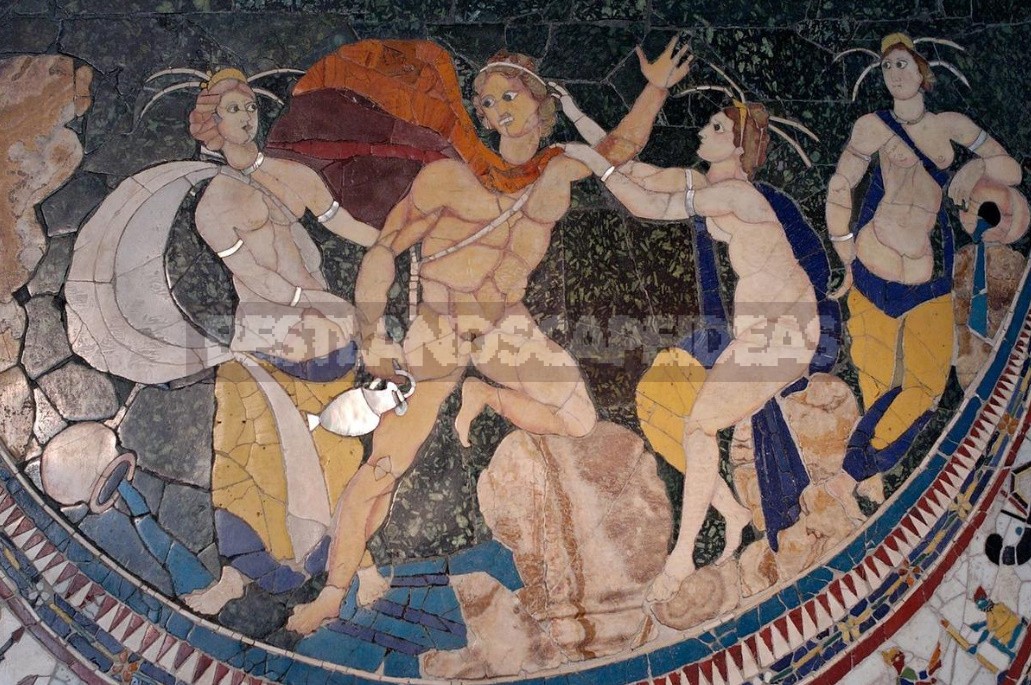
Varieties of piece mosaic can be called:
- marquetry and intarsia-decorative images created from plates of different types of wood;
- Florentine mosaic-almost seamless panels made of plates of semiprecious and precious stones;
- marble floors in the shaggy style with geometric ornamental patterns.
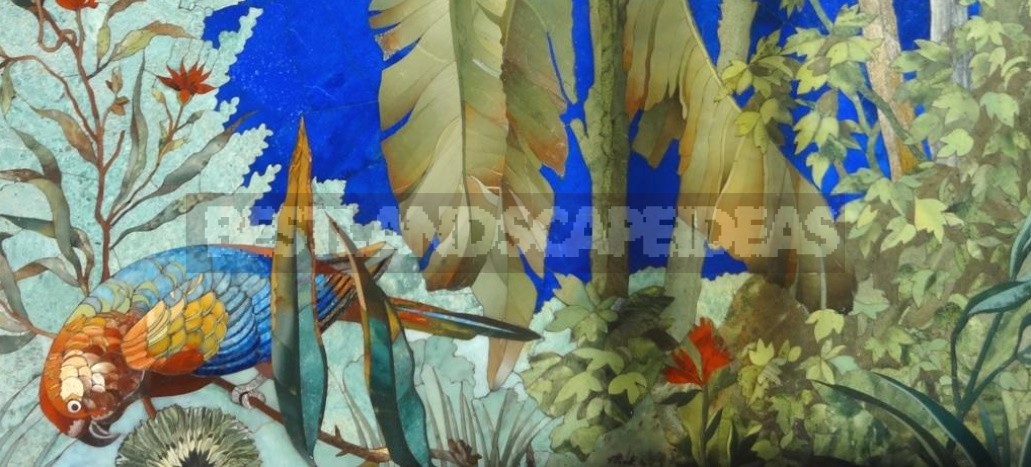
Modular mosaic
Creating mosaic works is a painstaking task. So, for example, on the panel for the Cabinet of the Empress (pictured above) worked 6 masters of the Peterhof granite factory for 5 years. By the way, the entire Cabinet was manufactured from 1884 to 1892. The development of technology has simplified the process — today you can decorate the walls of your own bathroom or kitchen with mosaics, without risking spending half your life on this process. The elements of the mosaic chips are packaged into modules, mounted on a base of paper or mesh, which facilitates the recruitment panel.

Modular mosaics are usually made up of square elements, just like traditional mosaics. But in contrast to the free arrangement of Roman mosaic details, the modular elements are placed linearly: in the form of a matrix. Drawing in this technique resembles cross-stitch.
Modern mosaic
Modern mosaic is not a technique, but a direction, because it can be done in classic ways. If in traditional works the drawing has a plot or an ornamental motif, in modern abstract works the authors most often convey emotions and mood, using a mix of techniques, materials, textures and colors.

Trash mosaic
One of the modern variants is the so-called trash mosaic (garbage mosaic). Bright examples of this trend are the works of the Chinese Hong Hao and the English Jane Perkins. Everything from plastic parts of office equipment, parts of printed circuit boards, electronic circuits and batteries, buttons, lids from bottles to fish bones, nut shells and other contents of the trash can can be used as a material for creating panels.
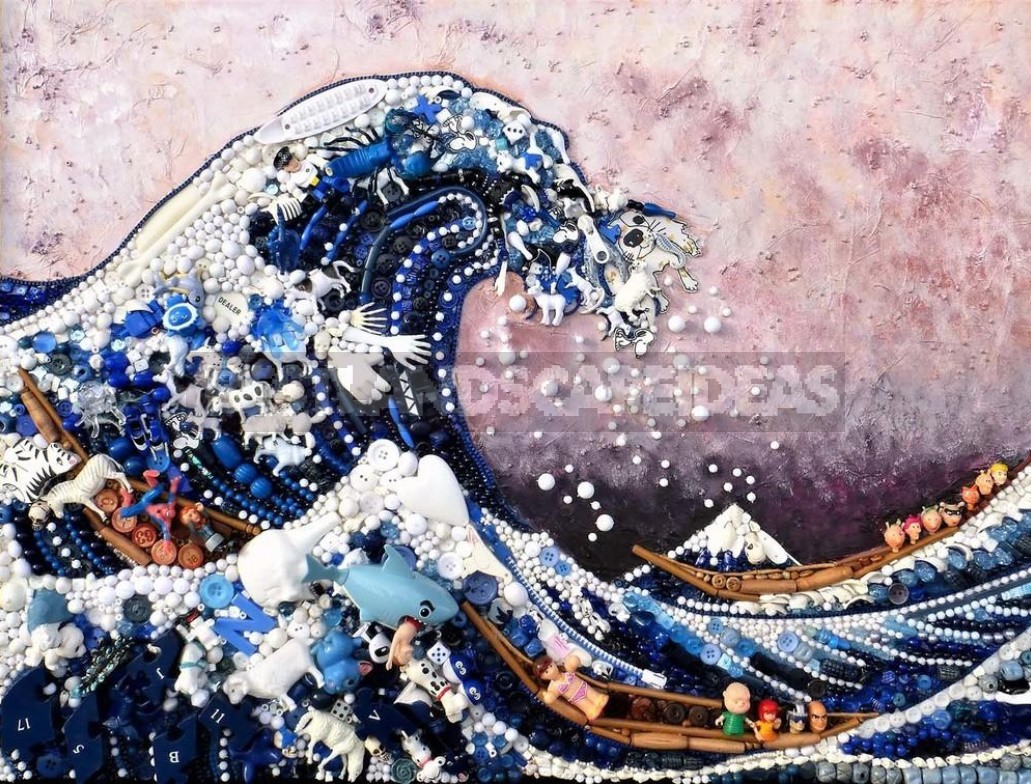
Trencadis
The trash direction can also be attributed to trencadis-a variant of classical art, born by the genius of Antonio Gaudi in collaboration with his student, Josep Maria Jujol y Gibert. Trencadís means “brittle”in Catalan. For the first time, Gaudi used the technique of broken mosaic in the construction of the Guel Park.
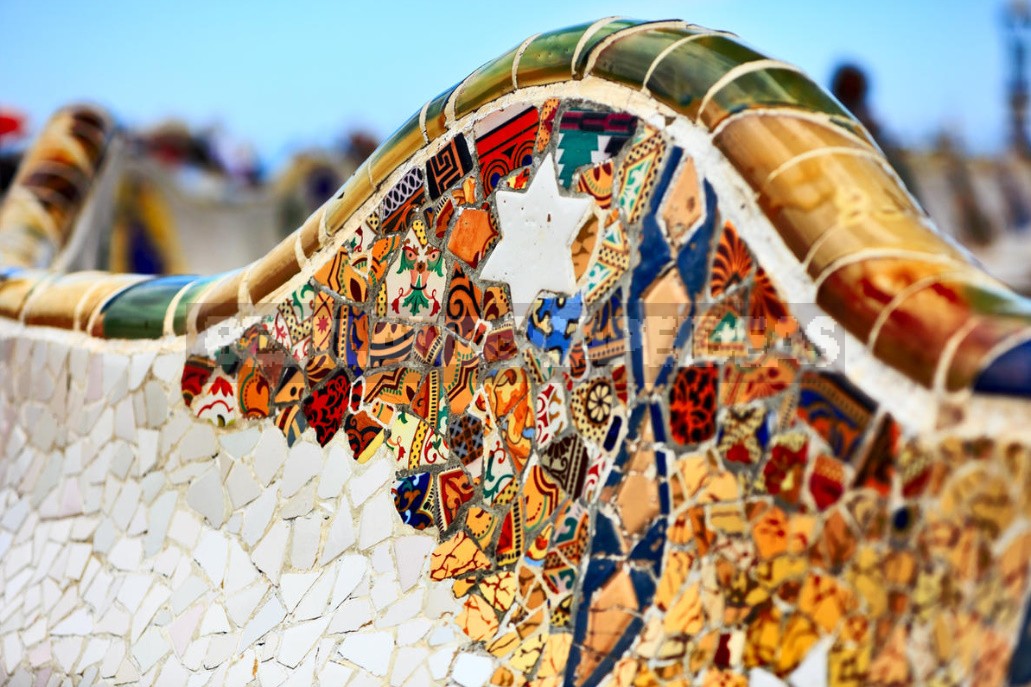
For finishing curved surfaces, such as the famous long bench in the form of a sea serpent, were used broken ceramic tiles from one of the best Catalan ceramics factories of the time “Pujol i Bausis” and brac from enterprises that produce porcelain dishes. In addition, the construction workers, in addition to their direct duties, were assigned to pick up bottles, broken plates, cups, and everything else that could be useful in creating mosaics.
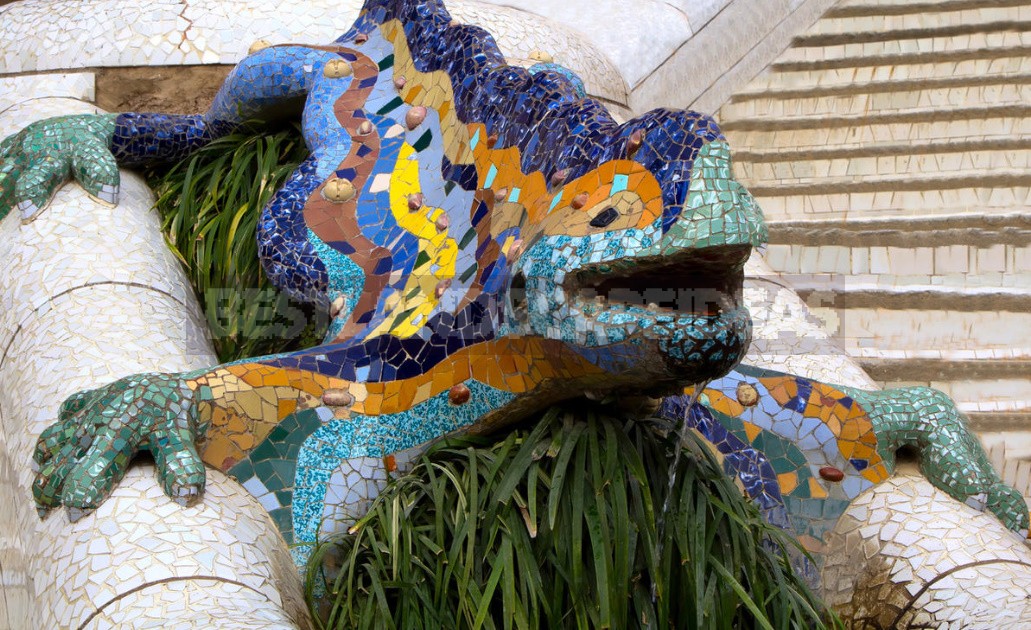
Gaudi himself
Of course, to create a concept of such a level as the mosaics of the Park of Guel or the house of Balliot, you need to be Gaudi, and to implement the idea — Josep Jujol. He is the author of most of the mosaics in Gaudi’s projects. However, everyone can try their hand at decorating interior and exterior items in the technique of broken mosaic.
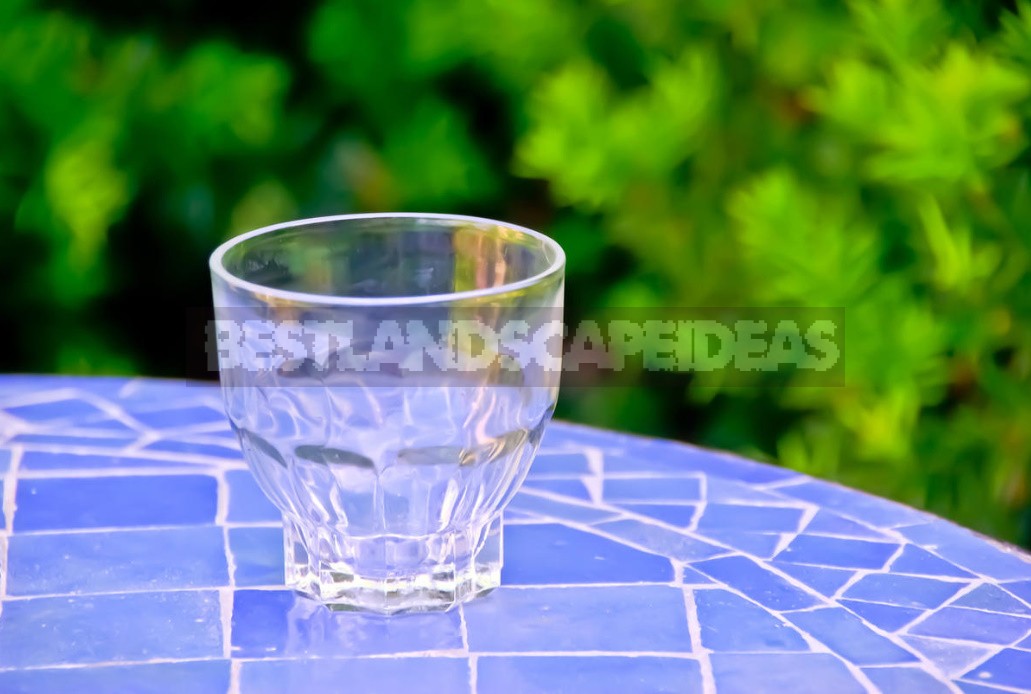
If you have a tile left after the repair or your favorite Cup is broken, then there is a great reason to give these materials a new life, turning them into a table, planters, photo frame or garden bench. And the country — the most convenient ground for the implementation of their plans. There are many places where the trencadis mosaic will be an appropriate decoration: from the border of the flowerbed and flower pot to the facade of the house.
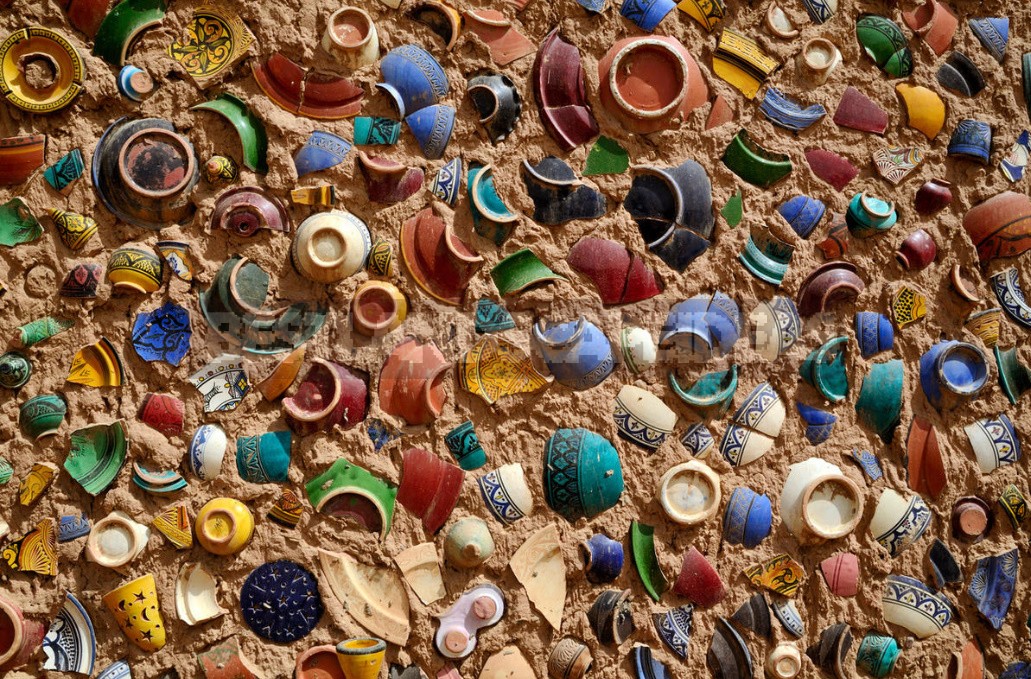
Mosaic of stone or ceramic pieces will be an excellent solution for finishing a fireplace or barbecue area, kitchen “apron” and garden furniture. If you decide to make a mosaic path or apply this design to the floor decoration on the terrace or in the bathroom, it is better to use unpolished stone or dial a mosaic of pieces of floor tiles, so that the coating is not slippery. Also, do not forget to treat the edges of the ceramic parts, so as not to cut yourself.
Come up with a composition in advance or just give yourself up to the creative wave and connect the colorful pieces in the mosaic in the way that you think is most beautiful.
Tip: if you are planning to decorate a small interior item with mosaics, use glue of the “liquid nails”type. For larger-scale projects and street objects, tile glue is better.
In addition to tiles and broken porcelain dishes, for decoration in the trencadis technique, you can use, for example, old CD’s. Or an eggshell. However, such mosaic materials are better used for making small things such as boxes or frames.

Mosaic is an exciting activity. Once you try it, it will be difficult to stop — for the upcoming “long winter evenings” you will definitely have something to do. And while there is little free time, we collect raw materials for future masterpieces: for example, we will oblige friends and relatives not to throw away broken cups.



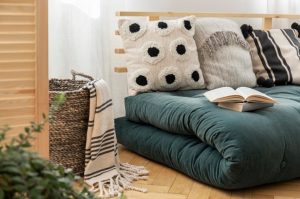
Leave a Reply